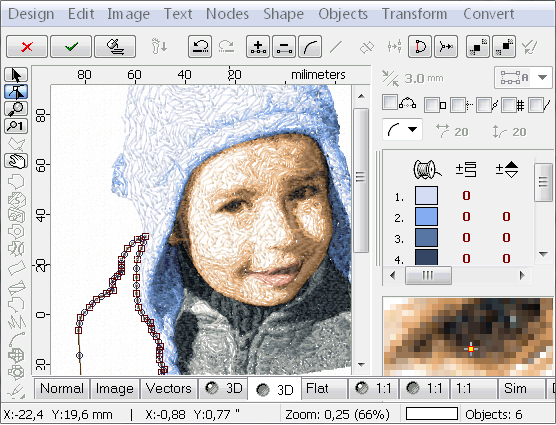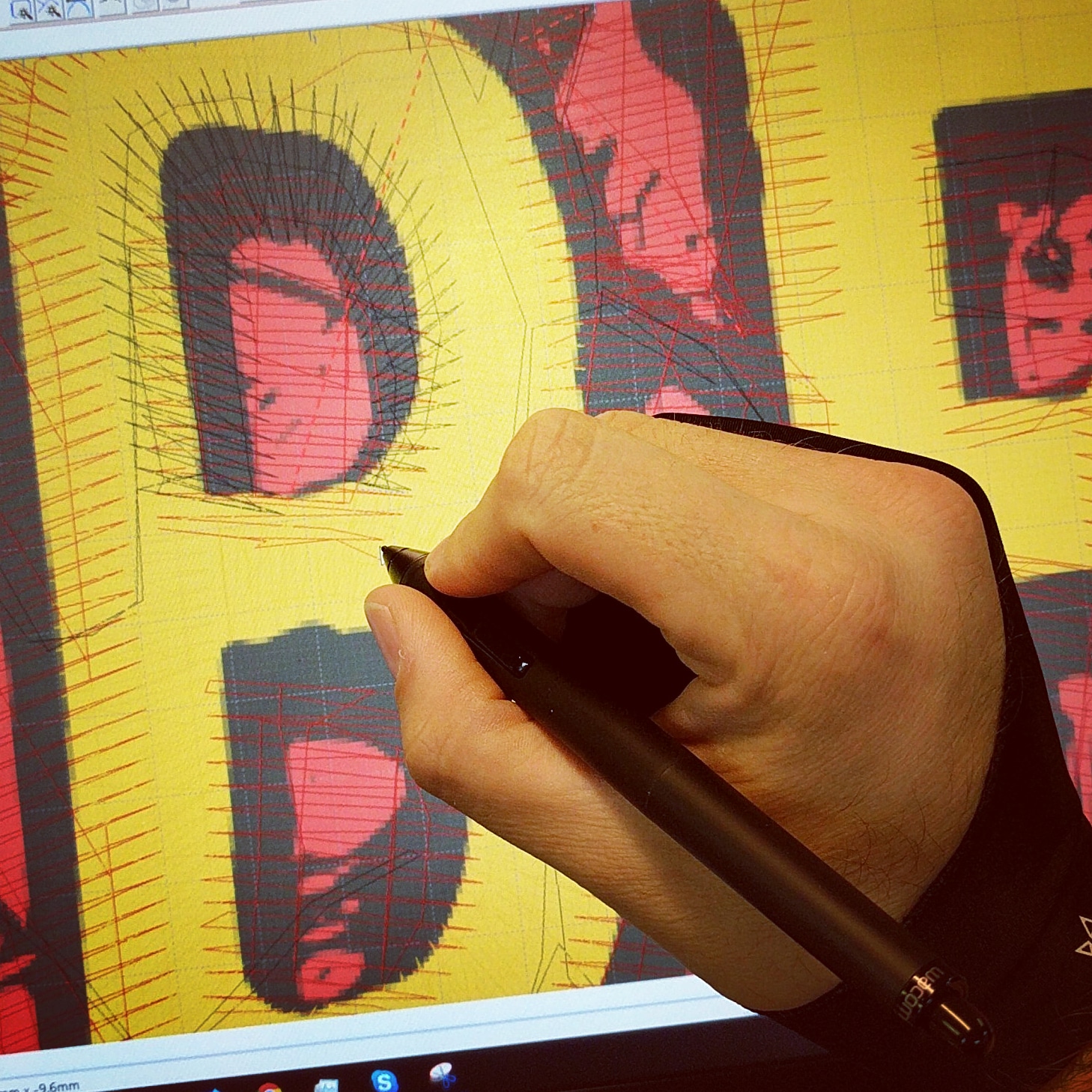Premier Digitizing for Embroidery: Perfect Stitch Every Time
Wiki Article
Understanding the Embroidery Digitizing Process: Your Ultimate Guide
Embroidery digitizing is a careful craft that calls for precision and experience to convert elaborate layouts into electronic styles for device embroidery. As craftsmens embark on this journey to master the needlework digitizing procedure, a thorough understanding of the essentials sets the structure for excellence. Beyond the primary understanding lies a world of innovative software application, specialized devices, and nuanced strategies waiting to be discovered. By delving right into the nuances of digitizing, one can open a globe of imaginative opportunities and boost their needlework projects to brand-new heights.
Comprehending Embroidery Digitizing Basics
Embroidery digitizing essentials develop the foundation upon which complex designs are equated right into machine-readable formats for precise stitching. This first action in the embroidery digitizing process is critical for making sure that the last stitched product is a loyal depiction of the original layout. Recognizing needlework digitizing essentials entails understanding vital ideas such as stitch types, sew direction, thickness, underlay, and draw payment.Sew kinds play an essential function in determining the visual and textural outcome of the stitched layout. By selecting the proper stitch type, whether it be satin, fill, or running stitch, digitizers can accomplish the wanted impact and boost the general high quality of the needlework. Furthermore, sew instructions affects the circulation and measurement of the style, while thickness identifies the spacing and insurance coverage of the stitches.
Moreover, padding stitching supplies stability to the style by protecting the fabric and avoiding distortion throughout the needlework process. Draw settlement is another vital consideration to combat the natural propensity of textile to contract when stitched. Mastering these embroidery digitizing essentials is essential for producing professional-quality stitched items.
Choosing the Right Digitizing Software Application
Selecting the proper digitizing software is an essential choice that significantly influences the efficiency and high quality of the embroidery digitizing procedure. Digitizing for Embroidery. When picking the best digitizing software application, it is necessary to consider factors such as the complexity of styles you prepare to produce, the user-friendliness of the software program, the degree of client support supplied, and the compatibility with your embroidery deviceThere are numerous digitizing software program alternatives readily available out there, varying from fundamental programs for newbies to innovative software application for professional digitizers. Some preferred options include Wilcom EmbroideryStudio, Hatch Embroidery Software Program, and useful source PulseID. These software program packages provide a variety of devices and attributes to aid you develop complex designs easily.
Before choosing, it is recommended to check out the different software application options with totally free tests or demos to identify which one best matches your needs. In addition, reading evaluations and seeking suggestions from skilled digitizers can give visit their website beneficial understandings right into the staminas and weaknesses of each software application package (Digitizing for Embroidery). By carefully evaluating your requirements and contrasting the features of different digitizing software application, you can make an enlightened selection that enhances your embroidery digitizing workflow
Digitizing Tools and Methods

Optimizing Layout Setup for Embroidery
Grasping the ins and outs of layout settings is essential in attaining optimal outcomes in the needlework digitizing process, building upon the structure laid by recognizing digitizing devices and methods. When maximizing design setups for needlework, it is essential to think about aspects such as stitch type, thickness, underlay, pull payment, and enrollment. Registration settings straighten various components of the design precisely, maintaining total style integrity.
Troubleshooting Common Digitizing Issues
When experiencing usual digitizing problems during the needlework process, it is vital to comprehend the root causes and apply effective remedies without delay. One common trouble is stitch thickness issues, where stitches may be too dense, creating the fabric to tighten, or as well sparse, resulting in voids in the layout. Changing the stitch density setups in the digitizing software go to this web-site program can help fix this concern.One more regular difficulty is thread breaks throughout the needlework process. This can happen as a result of different reasons such as wrong stress setups, plain needles, or using low-grade string. Guaranteeing appropriate upkeep of the embroidery device, consisting of routine needle changes and stress modifications, can decrease the incident of thread breaks.
In addition, style enrollment errors can result in misaligned components within the embroidery style. Inspecting the style alignment in the digitizing software program and making required modifications before sewing can assist in avoiding this problem. By addressing these typical digitizing issues immediately and properly, you can make sure a smoother embroidery procedure and top notch completed products.
Conclusion
In conclusion, mastering the embroidery digitizing process needs a strong understanding of the fundamentals, the right choice of software application, and expertise of devices and techniques. Maximizing layout setups and fixing usual digitizing issues are important actions in ensuring high-grade embroidery results. By following these steps carefully, one can accomplish precision and effectiveness in the digitizing process.Report this wiki page